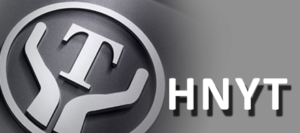What are the key leakage protection measures for trolley wire electric locomotives?
Leakage protection is an essential safety system for trolley wire electric locomotives, ensuring the safety of both operators and equipment. In any electrical system, leakage can lead to severe consequences such as equipment damage, electrical fires, or even personal injury. To prevent such risks, various measures must be in place to safeguard trolley wire electric locomotives. But what specific measures are involved in ensuring effective leakage protection for these electric locomotives?
1. Installation of Leakage Protection Devices
The first and most critical step in trolley wire electric locomotive leakage protection is installing specialized leakage protection devices. These devices are designed to detect electrical leaks and cut off power to prevent further damage. By quickly identifying potential leaks, these devices can stop accidents before they escalate, ensuring that the electric locomotive operates within safe electrical parameters.
2. Use of High-Performance Rectifier Cabinets
Another important measure is the adoption of high-performance rectifier cabinets. Rectifiers are responsible for converting alternating current (AC) from the overhead wires into the direct current (DC) needed to power the electric locomotive. A high-quality rectifier cabinet helps maintain stable and efficient conversion, minimizing the chance of electrical leakage due to faulty equipment. This also ensures that the trolley wire electric locomotive receives consistent and reliable power.
3. Stabilizing the Power Grid Voltage
A stable power supply is essential for the safe operation of any trolley wire electric locomotive. Fluctuating voltage levels can cause electrical systems to malfunction or even result in leakage. Implementing voltage stabilization measures ensures that the electrical grid feeding the electric locomotive remains consistent and within safe operating limits. This reduces the risk of equipment failure and leakage caused by voltage spikes or drops.
4. Maintaining Proper Insulation Between the Power Grid and Electric Locomotive
Effective insulation between the power grid and the trolley wire electric locomotive is another vital aspect of leakage protection. The insulation prevents electrical current from unintentionally reaching other components of the electric locomotive or surrounding environment. Regular inspections and maintenance of the insulating components are necessary to ensure they remain intact and perform effectively, reducing the risk of leakage and enhancing the safety of the electric locomotive system.
5. Adhering to Operational Procedures
Finally, operators must follow prescribed operating procedures to prevent leakage-related accidents. Improper handling or failure to adhere to guidelines can lead to short circuits, overloading, and electrical faults, all of which could result in electrical leakage. Ensuring that operators are trained to operate the electric locomotive correctly is essential for avoiding these risks and maintaining safe operational standards.
In conclusion, trolley wire electric locomotives require a series of leakage protection measures to ensure safe and efficient operation. By installing leakage protection devices, using high-performance rectifier cabinets, stabilizing power grid voltage, ensuring proper insulation, and adhering to operational procedures, the risk of electrical leakage can be minimized. These measures help prevent accidents and enhance the reliability of trolley wire electric locomotives, making them safer for both operators and the environment.









